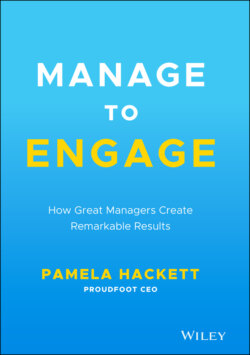Читать книгу Manage to Engage - Pamela Hackett - Страница 16
Is It Culpability or Capability?
ОглавлениеDuring the pandemic, we already saw that things could be different. Creativity was delivered. Innovation accelerated. People stepped up. Logistics, online retailers, tech firms, health care, food and beverage, and transport found varying degrees of success. But in others we retrenched people and reduced costs. Hospitality, airlines, bricks and mortar anything. Many employees pointed the finger squarely at management and leadership and how they navigated through the pandemic. Others understood that their industries were casualties of a pandemic more than management. But all asked, “Where is this multi-stakeholder capitalism now?”
It is here we need to start. This is where the tone and mood are set at work.
You could think it was a straight leadership problem, poor leadership, but as the world continues to change so rapidly and with so much coming at leaders today, it becomes more a question of developing capability rather than assigning culpability. Are we developing our leaders effectively? Do we have the right tools and approaches for today's workforce? Are our workplaces free of the noise that prevents engagement, the politics that stops it in its tracks?
With the best intentions, many managers struggle to engage their people because they don't lay the foundations for a safe, productive workplace. Leaders struggle to free themselves up to think about how their organizations could be better built to engage.
We know how we manage and lead has a direct effect on how people feel at work. We know that people quit people more than their jobs. We also know that when your systems, processes, and workplace doesn't support you, frustration takes the place of enthusiasm and the camel's back is broken by the last straw that was hanging on to engagement. We switch off, we quit, or worse still, we quit and stay.
So, what if you could bring a different mindset to engagement and apply new tools and approaches to help you enable people to engage? This is not about perks and prizes. As managers and leaders, we have an opportunity each day, each time we interact with people, to change their world of work for the better. Sometimes with small tweaks in how we connect or how our workplace connects with us, other times with large-scale change. All find their roots in engagement. All are necessary now more than ever. We will not build the businesses we all want to work for, the ones people will feel passionate about rethinking, reinventing, and rebooting, until we do.
